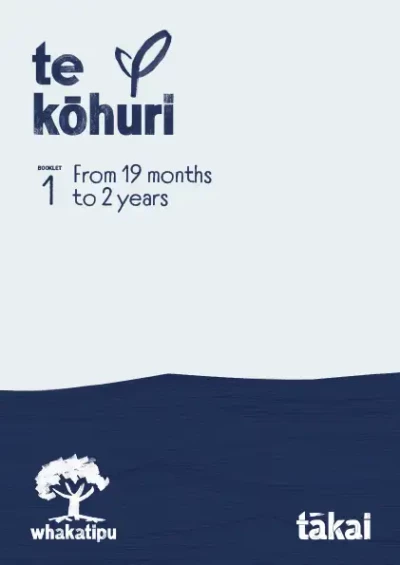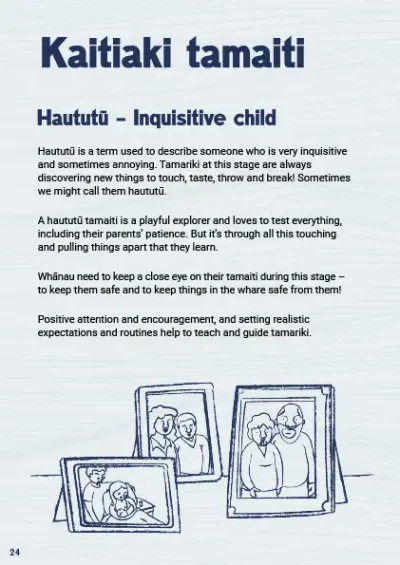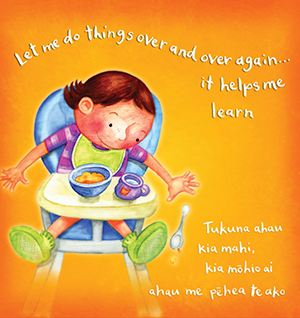
Keeping haututū safe
A haututū pēpi is a playful explorer and loves to test everything, including their parents’ patience. Whānau need to keep them safe and direct their inquisitiveness and high energy into positive avenues.
Haututū is a term used to describe someone who is very inquisitive and sometimes annoying. Tamariki at this stage are always discovering new things to touch, taste, throw and break! Sometimes we might call them haututū. But it’s through all this touching and pulling things apart that pēpi learns.
Being inquisitive
Haututū is a kaupapa to revisit as tamariki grow and their behaviour creates different challenges for their whānau.
Being allowed to probe and seek, and understand for themselves, fosters the individuality of tamariki. As they explore, they discover their own individual learning and creativity, and grow in self-worth, identity, and confidence.
This exploration supports them towards their eventual ability to appreciate and conquer the multitude of challenges that abound in the universe.
Keeping things positive
If parents see their child’s behaviour in a negative light, perhaps you, the whānau supporter, can encourage them to focus on the positive side of things and help them see their haututū child as a blessing and not a hōhā .
Parenting tamariki at this stage can be demanding at times, but also very rewarding. But when parents are tired or stressed this can feel like a tough job.
If things can be kept positive the outcomes will be more pleasant and the learning will be greater. Remember that play is children’s learning. We can’t expect tamariki this age to sit quietly for too long. Tamariki need to move around, use their big muscles, and let off steam.
Conversation ideas
Keeping tamariki safe
A haututū pēpi might test their parents’ patience sometimes. Whānau will need to keep a close eye on their little one during this stage – to keep them safe and to keep things safe from them.
The Whakatipu booklet Te Kōhuri 1 talks about how active tamariki are at this stage – their physical abilities, language growth, thirst for learning, enjoyment of books, love of music and movement, growing imagination and independence. You might also find the Ngā tohu whānau pages useful.
There are 2 important messages to cover.
- Tamariki are clever at getting into places, but not very aware of safety issues. Adults need to keep them safe.
- Exploring and ‘getting into things’ helps promote a young child’s interest in learning.
 pdf 10 MB
pdf 10 MB














